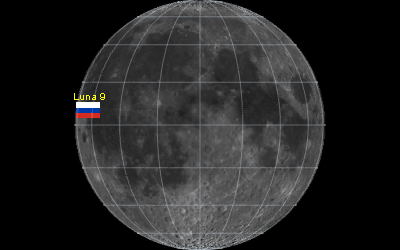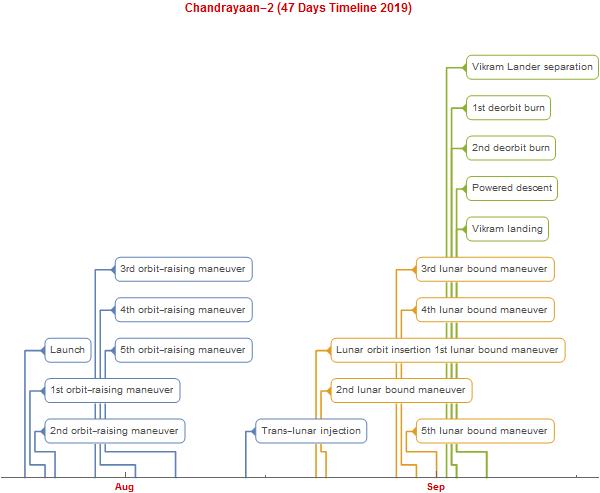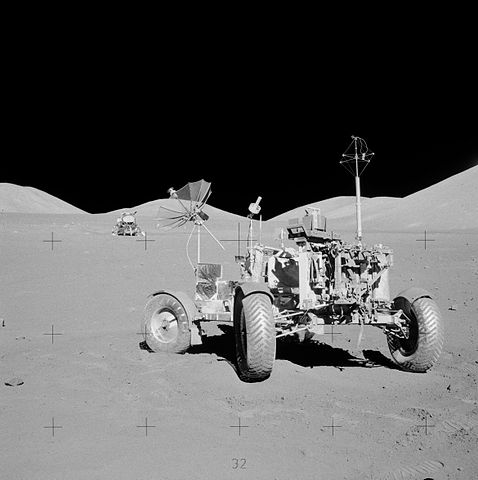Landing on the Moon
Since a lift off on July 22, 2019, Chandrayaan-2 mission has been brewing up everyone’s interest about Indian space research and technology [1]. Everyone has first-hand interest in the Moon and that makes one curious about the space missions to the Moon. The same made me tinker with some lunar data in the public domain [2-3].
 If you plan a trip to the Moon, it offers you two special choices for landing your spacecraft, a near-side and a far-side of the Moon. This is because only one side of the Moon is visible to us. Time it takes to spin around itself equals the time taken to orbit an Earth. Well! A logical mind may have a question - What are the chances that these both time-periods match perfectly? Or, How perfectly equal they are? Physics has more insights to offer! We say, “Earth has nearly tidally locked the Moon.”
If you plan a trip to the Moon, it offers you two special choices for landing your spacecraft, a near-side and a far-side of the Moon. This is because only one side of the Moon is visible to us. Time it takes to spin around itself equals the time taken to orbit an Earth. Well! A logical mind may have a question - What are the chances that these both time-periods match perfectly? Or, How perfectly equal they are? Physics has more insights to offer! We say, “Earth has nearly tidally locked the Moon.”
Interesting aspects of tidal locking of the Moon
A gravitational gradient is a reason behind the tides.
Near-side of the Moon
Earth’s non-uniform (or different) gravitational forces at near and far-surface of the moon causes a slight bulge (tides) in shape of the Moon. Further, the bulge offers a handle (via torque) of the Moon to Earth. Consequently, Earth stears Moons’s near-side hemisphere always facing earth. The far-side of the Moon was not seen until 1959, when Soviet Union’s Luna 3 Orbiter sent pictures of it. It was special. I made an animation above to make you round-trip the Moon.
Nearly-stationary Earth in the lunar sky
It’s worth mentioning it, if you haven’t imagined yet! A weird or perhaps interesting consequence of tidal locking of the Moon is- In lunar sky, Earth appears to be nearly stationary at some direction (depending on where you stand on the Moon). Secondly, one can see Earth completing its spin in 24 hours.
Moon-missions in the past
 There have been numerous missions to the Moon. Partly, a credit for the space-race goes to a cold-war between USA and Soviet Union. I tried to plot almost all soft-landings (unmanned and manned) using co-ordinates of the landing sites. Starting with the first un-manned soft landing in the history (1966), of Luna 9, by Soviet Union. Notably, almost all soft landings including all six manned Apollo missions landed on near-side of the Moon and near an equator. Our knowlegde of lunar geology from its soil-samples has been limited to this area.
There have been numerous missions to the Moon. Partly, a credit for the space-race goes to a cold-war between USA and Soviet Union. I tried to plot almost all soft-landings (unmanned and manned) using co-ordinates of the landing sites. Starting with the first un-manned soft landing in the history (1966), of Luna 9, by Soviet Union. Notably, almost all soft landings including all six manned Apollo missions landed on near-side of the Moon and near an equator. Our knowlegde of lunar geology from its soil-samples has been limited to this area.
China successfully soft landed two probes, Chang’e 3 in 2013, towards north pole on near-side and another (Chang’e 4) recently in Jan 2019, towards south pole on far-side of the Moon.
ISRO’s Chandrayaan-2
There has been excitement about soft landing attempt of Chandrayaan-2. I thought of plotting a time-line of Chandrayaan-2 along side that of the first successful manned soft landing, Apollo 11. It is about looking in to the details of Chandrayaan-2 at glance and re-living a historic Apollo 11 mission [1-3].


Have we left something on the Moon?
Having numorous failed and successful landings, we have plethora of artificial man-made objects left on the Moon [4]. Many useful scientific instruments and some abandoned ones.
This is one of my favourites, a Lunar Roving Vehicle used in Apollo 17! Designed for carrying two astronauts and lunar rock samples.

- https://www.isro.gov.in/chandrayaan2-home-0
- https://en.wikipedia.org/wiki/Chandrayaan-2
- https://en.wikipedia.org/wiki/Exploration_of_the_Moon
- https://en.wikipedia.org/wiki/List_of_artificial_objects_on_the_Moon
- http://www.wolfram.com/knowledgebase/?source=nav